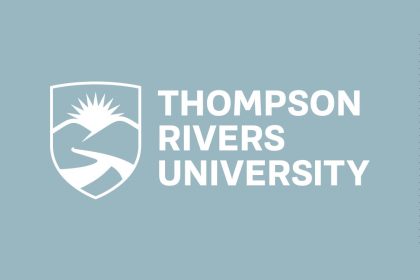BCcampus Director of Open Education Clint Lalonde had the opportunity to attend the inaugural Free and Open Source Yearly (FOSSY) conference in Portland, Oregon, this summer. Here are his reflections on the event.
By Clint Lalonde, director, Open Education, BCcampus
The inaugural FOSSY conference was held in Portland, Oregon, this summer. Organized by the Software Freedom Conservancy, the conference included a track dedicated to open source software in higher education, organized by the Apereo Foundation. In addition to my work at BCcampus, I’m on the board of directors of this non-profit organization that supports free and open source software in higher education.
One of my FOSSY highlights was meeting instructors Grant Braught, Heidi Ellis, Greg Hislop, and Karl Wurst, who are all involved with the Professors’ Open Source Software Experience. These instructors integrate open source software into their teaching and learning practice by connecting their students with open source projects and helping them become active contributors to them. This type of experiential open pedagogy learning activity provides a rich, rewarding, authentic learning experience compared to traditional assignments, and I couldn’t help but draw parallels to the work of the Wiki Education program.
I came away from my meeting with these educators impressed with their commitment to Humanitarian Free and Open Source Software (HFOSS), which is designed to benefit the human condition in areas such as health care, economic development, disaster management, ecology, education, and more. Hislop and Ellis have conducted numerous studies on the use of HFOSS with students and learned that many, especially women, find working on HFOSS projects intrinsically motivating. It may be a good way to attract traditionally underrepresented communities into the fields of computing science and open source software development. For more on Hislop and Ellis’s work, visit their community of practice site, Teaching Open Source, where they bring together people and resources to help others incorporate open source software projects into their teaching and learning.
Another highlight was learning about Paperless Open Marking, an open source project at the University of British Columbia that aims to bridge the divide between physical and digital grading for math-based courses. Paperless Open Marking software provides a workflow that allows students to take quizzes and exams on paper that instructors and teaching assistants can grade digitally.
As with most face-to-face conferences, much of the value at FOSSY came from hallway conversations. I had many informal meetings with folks involved with Apereo projects, including rich discussions with people involved in Open Source Program Offices. I met with Stephen Jacobs from the Rochester Technical Institute, whose Open Source Program Office has a broad open scope. Open@RIT uses the term Open Work to define its scope of practice, which includes open educational resources, open science, open scholarship, open access, and open knowledge in addition to open source software. I found this broad framing impressive and a great example of how institutions can begin to centralize support for the gamut of open activities happening in higher education.
Finally, I was able to highlight some of the work being done in B.C. during a presentation with Anne-Marie Scott, chair of the Apereo board. Anne-Marie and I are advisors for the OpenETC, an open source education technology collaborative. Our presentation, titled We shared some open ed tech. YOU WON’T BELIEVE WHAT HAPPENED NEXT! , highlighted how the OpenETC uses open source education technology to support the B.C. post-secondary system.
The event was a great way to connect with others interested in the role of open source software in higher education, and I’m already looking forward to FOSSY 2024.
